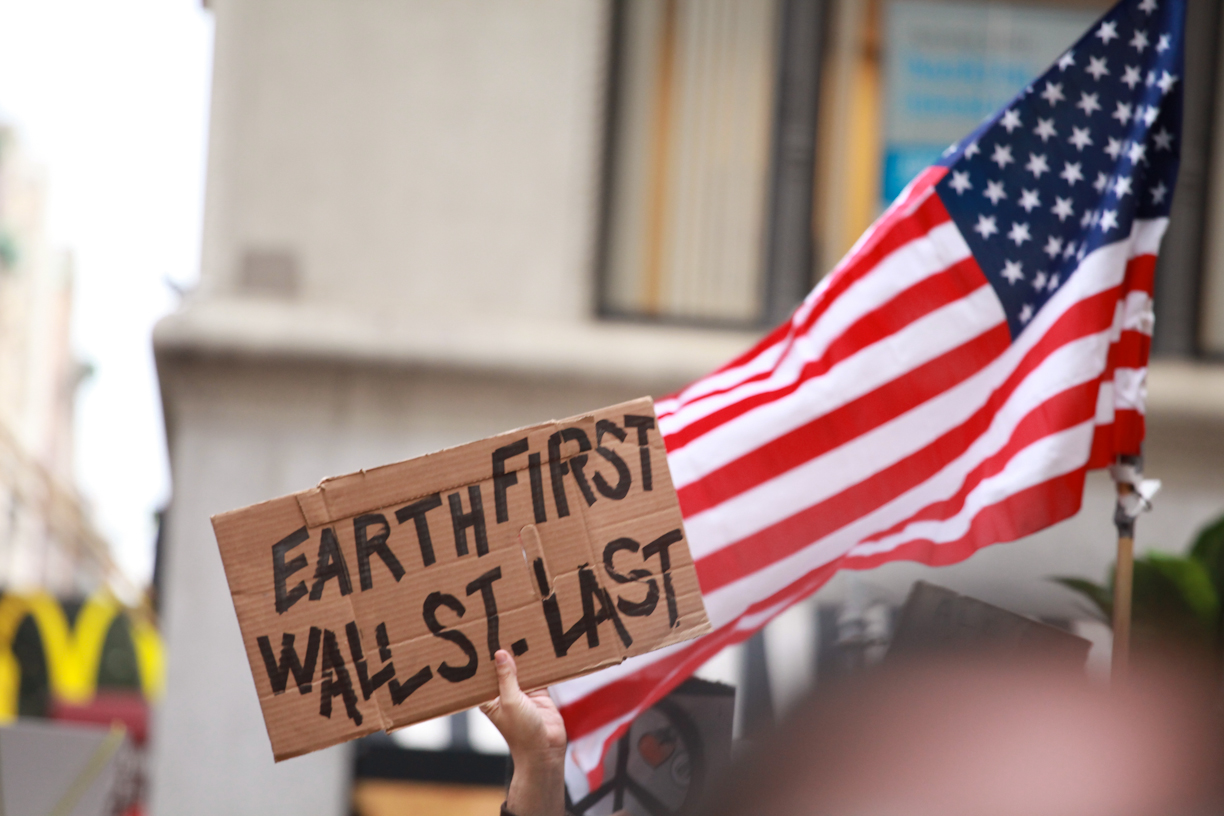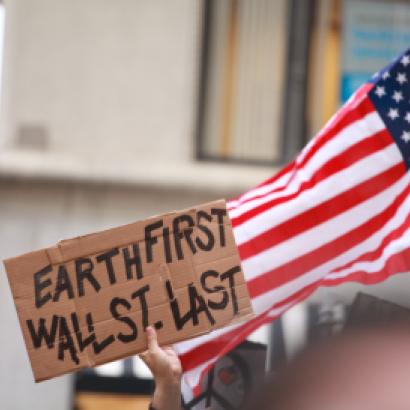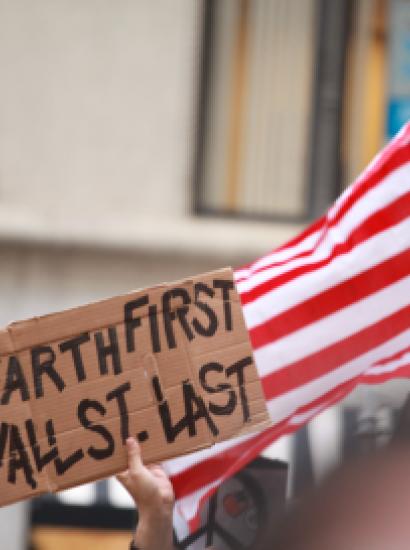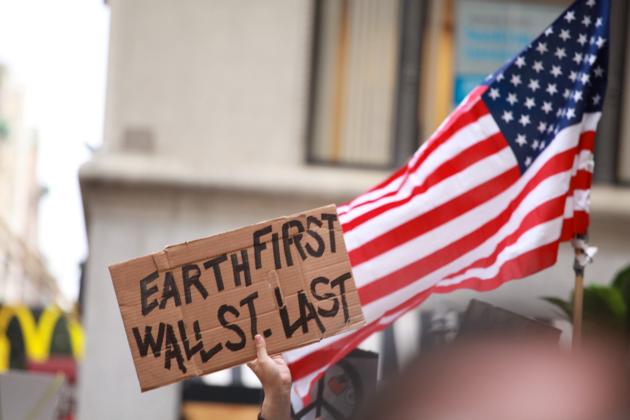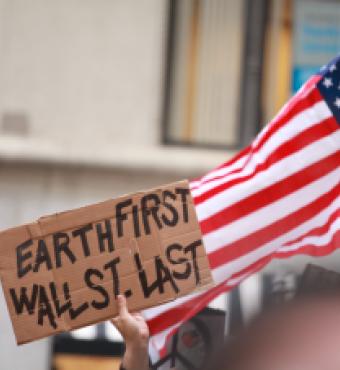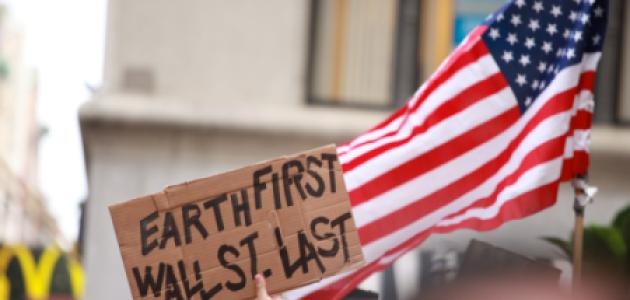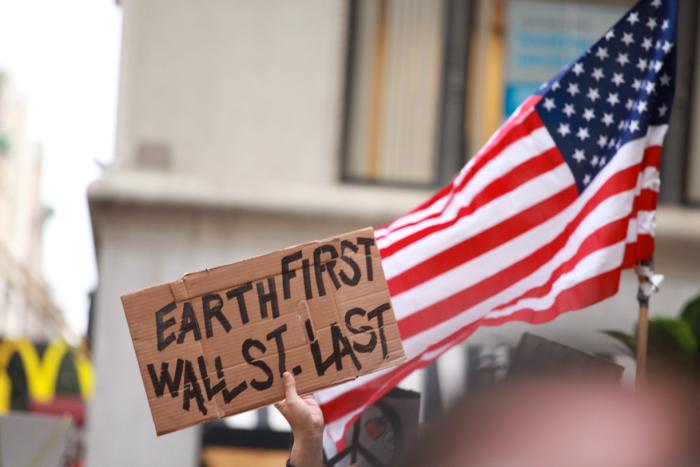Environmental benefits are often referred to as public goods. That is, they are beneficial and all individuals can enjoy them without excluding others. This is a very compelling argument for environmental regulations from government. Except that not everyone values public goods in the same way or by the same magnitude. Some citizens may strongly desire policies that for example, protect polar bears in the Arctic. Others may not care at all.
These different assessments of the value of public goods would not matter if providing them was inexpensive and advocates paid for them. But that is not the case. In general, politicians have little incentive to provide pure public goods. That is because with a pure public good key constituents, who provide campaign donations, get out the vote, and lobby for a politician do not receive anything private, or special in return. A public good goes to everyone, so the incentive to free ride is overwhelming. On the other hand, if the public good is especially valuable to some voters, rather to others, and they do not have to pay for it; if they also receive additional subsidies; and if these voters are well organized, highly educated, wealthy, and have high voting participation rates, then politicians have very different motives. The provision of public goods in this case is really the provision of a private good and politicians are very responsive.
For example, it is politically popular in many states, especially California, for government to promote renewable fuels and zero emission vehicles (ZEVs) with subsidies and to regulate and raise the costs of power generation from fossil fuels. These efforts are designed to reduce greenhouse gas (GHG) emissions and mitigate possible climate change. There are numerous problems with these policies, most notably the lack of a global census to confront GHG emissions internationally. Absent cross-national collaboration, efforts in California or in the US can be fully offset by noncompliance in China, India, Brazil, Indonesia, or where ever. Hence, there are no obvious direct benefits from these actions.
But they are costly nonetheless. They not only divert tax revenues from other uses, such as schools, hospitals, highways, but raise consumer prices by increasing energy costs. Poorer tax payers often pay more of their incomes in taxes and consume more of their incomes, relative to wealthier citizens, who are the main members of environmental lobby groups and lobbyists for environmental regulation.
Consider Tesla, the premier zero-emission vehicle (ZEV). The purchaser of each Tesla Model S that costs $70,000 or more receives a $7,500 federal tax credit, plus state credits. Within California, for example, purchasers can get a tax rebate of up to $2,500 and opportunity to access special freeway lanes, an important benefit in traffic-clogged California. Moreover, the Tesla company receives 4 ZEV credits that it then sells to other car dealers in the state because the California Air Resources Board requires all dealers to sell a fixed number of ZEVs each year. Because other car companies cannot meet that mandate given tepid demand, they must purchase credits from Tesla, effectively raising the costs of their cars and subsidizing Tesla. Few inhabitants of South Central Los Angeles, one of the poorest parts of the city, know about Teslas, its alleged environmental benefits, or what each vehicle costs them. On the other hand, those in wealthier Brentwood and Beverly Hills have a far better sense of what they gain from a Tesla purchase.
It is clear that low-income citizens are subsidizing the wealthy in this case, and as more and more state resources are devoted to such policies, the overall economy becomes less vibrant, generating fewer blue collar jobs and other opportunities for those who are struggling the most in the society. For these people, an abstract notion of reducing GHG emissions and climate change in the face of worldwide free riding has little appeal. Yet, the wealthy and other related constituents who value efforts to confront climate change and bear few of the costs are strong supporters and lobbyists in the political arena.
Just check out the membership characteristics of the Natural Resources Defense Council, the Sierra Club, and Friends of the Earth. These individuals lobby politicians and regulatory agency officials (many of whom support an added mandate) to provide environmental public goods because they receive private benefits. They value the public goods more; receive subsidies; and they pay relatively little of the costs.
Because environmental regulation is such a large and growing share of all state and federal regulation in the economy, these actions not only impose increase costs, but provide benefits that only a small portion of the population value, at least as much as the costs they bear. The problem is likely to get worse for two reasons. First, provision of public goods seems so self-evidently appropriate that who can object? In fact, few do because those who value environmental regulation the most lobby for it and those who value it the least devote little attention to environmental policy. They have other issues, such as finding and keeping a job, meeting mortgage payments, and so forth, to occupy their attention. Wealthy advocates face fewer constraints.
This problem of differential valuation is less for local environmental regulations, such as provision of local open space or cleaning local streams and ponds. These actions have demonstrable local private benefits to all citizens, even as public goods. But broader, more abstract notions, such as GHG controls or polar bear protection mean relatively far less to many citizens. Public opinion polls rarely make clear what environmental policies will cost. This is the second reason why the problem of environmental regulation is likely to get worse: the costs are focused on the lowest income citizens and are not transparent. Hence, it is hard for those parties to mobilize to demand careful scrutiny of environmental policies. They care little about the environmental policies and know little about the costs they bear. For wealthy advocates, who benefit more and bear fewer costs, by contrast, there is every incentive to support regulation and to cloak the policies in broad public goods despite both harmful distributional and efficiency effects in the economy.
An illustrative example is the recent proposal to shield the Arctic National Wildlife Refuge (ANWR) in Alaska from oil exploration and production by declaring the region Wilderness. The Presidential Executive Order made in January 2015 covers nearly 13 million acres, slightly smaller than the state of West Virginia. The objective is to protect pristine habitat, home to caribou, polar bears, bird, and marine life from any disruptions caused by oil and gas development. The New York Times editorial January 27, 2015 applauded this effort by the Obama Administration as protecting a “Valued Wilderness.”
Fair enough. But how valuable? At what cost? And who benefits and bears those costs? These are critical questions in assessing whether or not this action to provide an environmental public good is broadly beneficial for the American public. Would the policy stand public scrutiny if the costs and benefits and their distribution were put up to public debate? Because less-educated, lower-income citizens are less likely to vote or to join lobby groups, they are underrepresented in political lobbying relative to citizens who are more educated and wealthier. The public good of protecting the Arctic Wildlife Refuge, as with other environmental regulations, may not be in the interest of the former, while clearly benefitting the latter. On net, the policies may or may not be good for the country’s citizens.
Let’s look at the evidence regarding the Arctic National Wildlife Refuge to see how things might stack up. Unlike most environmental policies, we do have suggestive evidence to answer the questions raised above. Two economists, Matthew Kotchen and Nicholas Burger, calculated the costs and benefits in a 2007 paper in the journal Energy Policy, “Should we drill in the Arctic National Wildlife Refuge? An Economic Perspective.” The authors used the best estimate of economically-recoverable oil in the federal portion of ANWR at 7.06 billion barrels, about equal to total US consumption for the entire year of 2005. They also used $53/barrel, which is close to the current price of oil, to arrive at a gross revenue of $374.2 billion from oil production.
Total recovery costs, including state and federal taxes, were estimated to be $122.8 billion, giving a net revenue or benefit of $251.4 billion. Kotchen and Burger apportioned these benefits among oil firms, the state of Alaska (which relies on oil revenues for many government services), and the federal government at $90 billion, $36 billion, and $125 billion, respectively. You can immediately see why Alaska politicians are so concerned by the President’s action.
The negative environmental effects of ANWR oil exploration and production, mostly from vehicle traffic and road and other infrastructure construction, such as pipelines, and oil spills could include disruptions to the Porcupine Caribou Herd’s migration patterns and calving rates and survival. Other harmful effects could follow on other species such as musk oxen, polar bears, and migratory snow geese. All of these negative effects, however, are little known because there remains so much uncertainty about how these natural systems operate and respond to human disturbances.
Even so, for some citizens, any risk of environmental harm is just too great. The existence value of the species and their habitats is just too high. But too high for whom? Obviously, environmental advocates see clear value. Others may not see these values so high. Critically, however, advocates do not bear proportionate costs of the regulations. If they did, then the policy problem would be less severe. When advocates, who are skilled in lobbying benefit more and bear fewer costs than do others who bear more costs than benefits and are less prone to lobbying, then there is inexorable political pressure to over supply environmental public goods.
In the ANWR case, Kotchen and Burger focused on what could be estimated fairly precisely, the benefits of drilling at $251.4 billion, and then used that number to indicate what the environmental costs would have to be in order for a benefit/cost ratio to be less than one. Using this logic, the costs would have to be at least $251.4 billion. But this number is hard to assess because it is so abstract, so Kotchen and Burger divide the benefits of drilling among the relevant US population of residents 18 and older in 2005, giving a value of $1,141/person. This value suggests that on average, American citizens would require $1,141 as compensation for not drilling in ANWR. They may or may not accept this tradeoff, but if the policy were presented to general voters in this manner, setting aside ANWR would clearly stimulate far more debate and the President’s action might not be so politically popular.
All in all, environmental regulation, which is replacing price and entry controls as the most prevalent form of government regulation, is growing. It is generally applauded because it provides public goods. In many cases, it might. In other cases, the benefits are largely private goods, despite the way in which the policies are described. The problem arises because of the lack of balance in who pays for these policies and who values the benefits from them. Advocates, who are proficient in the political arena, get more and pay less. General citizens, who are much less proficient, get fewer policies that they value and pay more. Due to the lack of competitive lobbying, where all interests are represented, too little information is presented on the true costs of environmental regulation. By contrast, citizens are told daily what the benefits might be.
Politicians and agency officials are not residual claimants to the social costs and benefits of their actions. They are motivated to respond to advocates. The result is excessive environmental regulation that benefits a few with costs borne by the broad citizenry.







